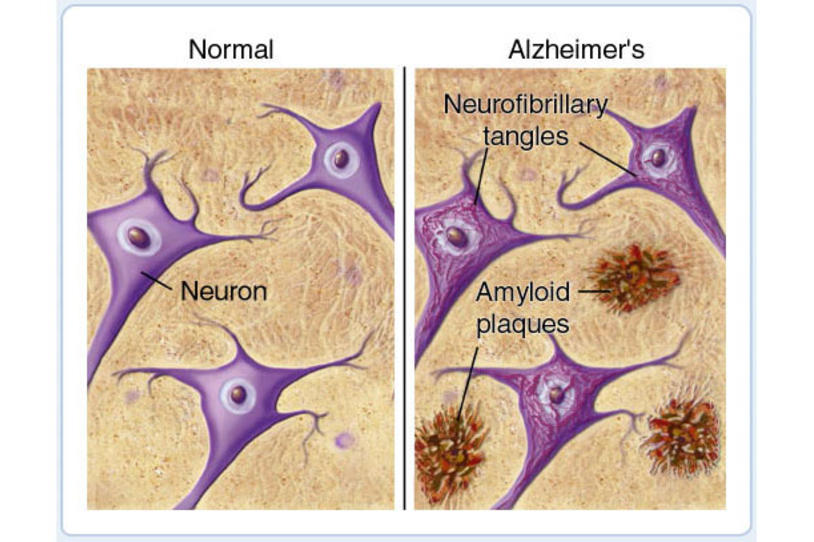
Over the past few months, one particular Alzheimer’s disease (AD) drug target has repeatedly been in the news for all the wrong reasons: a protein called beta amyloid. Many in the field of AD research have hypothesized that the accumulation of plaques of beta amyloid in the brain could play a causal role in the disease, and for this reason, trials have focused on breaking up these plaques in order to slow Alzheimer’s progression. Unfortunately, recent clinical trial results for drugs targeting beta amyloid build-up have returned either middling or negative results.
While negative results from several clinical trials certainly doesn’t mean the end of a hypothesis (much beta amyloid research is still ongoing), it can serve to remind the field that, while one idea may be trendy, others might too hold weight. One such alternative, and long-held (if less celebrated) hypothesis, profiled in today’s Wall Street Journal, suggests that a different protein in the brain, called tau, might also hold the key to an Alzheimer’s drug.
The Journal explains tau’s role in the Alzheimer’s-affected brain:
Like all of the body's proteins, tau has a normal, helpful function—working inside neurons to help stabilize the fibers that connect nerve cells. But when it misfires, tau can clump together to form harmful tangles that kill brain cells.
Research is moving forward to find drugs that might un-tangle these twisted brain fibers, which could, in turn, slow the disease. One company, called TauRX, is now readying for two large scale clinical trials of such a drug. Earlier clinical studies have shown positive, if not unequivocal, data into the TauRX therapy says the Journal; one such trial showed an 87 percent reduction in the rate of cognitive decline for those taking the drug.
Still, the jury is still out on whether drug candidates targeting tau will turn into real treatments that reach pharmacy shelves. TauRX must first show that their drug works in those large-scale upcoming clinical studies; it’s still far from being a sure thing. Science still has some work to do to find a disease-modifying drug for AD, and to determine the best target – maybe it’s beta amyloid, maybe it’s tau, or maybe it’s neither. Or maybe it’s a combination of both.
Interestingly, in recent years, tau has also become a point of focus for those in the field of Parkinson’s disease (PD) research as well. In addition to being genetically linked to a higher risk of developing PD, scientists from The Michael J. Fox Foundation’s (MJFF) Parkinson’s Progression Markers Initiative (PPMI) are looking into whether levels of tau in a person’s cerebrospinal fluid (CSF) might also provide a biomarker for who might be more likely to go on to develop Parkinson’s. Very early studies suggest that lower levels of tau in CSF may in fact be representative of PD.
There’s an interesting discrepancy between tau’s apparent role in AD and PD, says Mark Frasier, PhD, MJFF’s vice president of research programs. In AD, there is a clear pathological marker, or clear physiological relationship of disease related to tau – those tangles in the brain mentioned above. But as of yet, there’s been no sign of a genetic mutation in tau that might lead to the disease.
In PD, it’s the opposite: While there have been genetic studies linking changes in tau to PD, there has been little evidence of tau pathology (those tangles seen in AD) in most PD brains. For this reason, most current work into tau and PD is to determine if the protein might one day provide a biomarker for the disease.
The PD community will watch closely to learn more about the effectiveness of therapeutic approaches to tau in Alzheimer’s, such as the one from TauRX, before moving forward with targeting the protein for potential Parkinson’s drugs.
Please give today to help us attain the research results patients need: Donate.
photo credit: Alzheimer's Disease Research